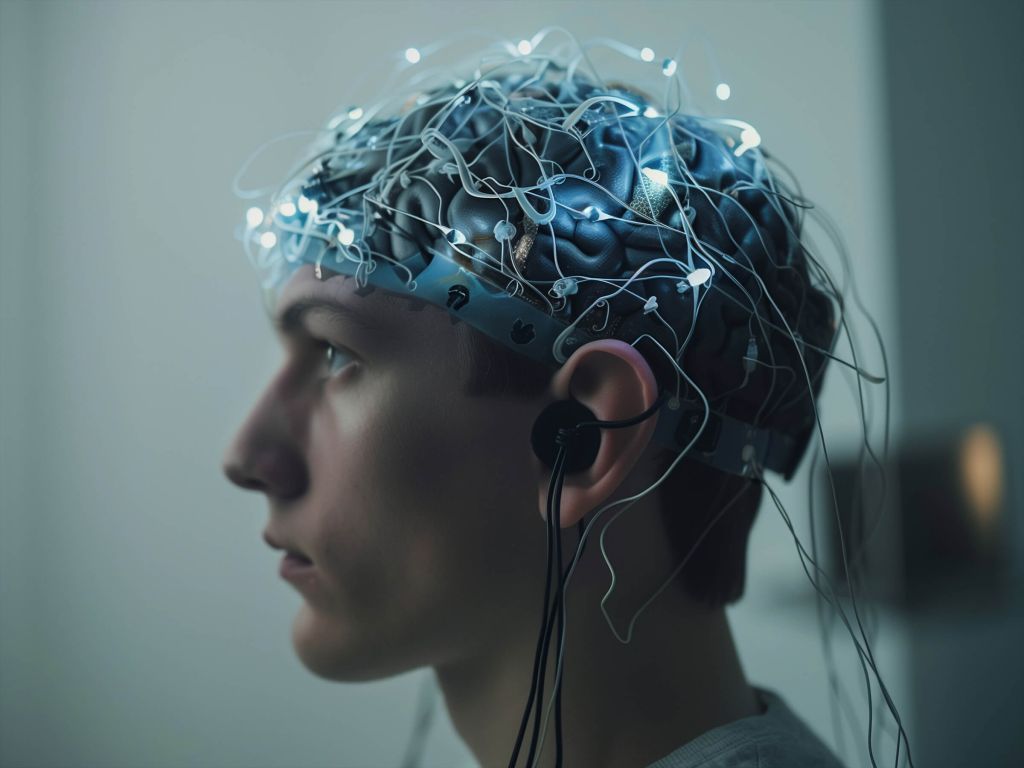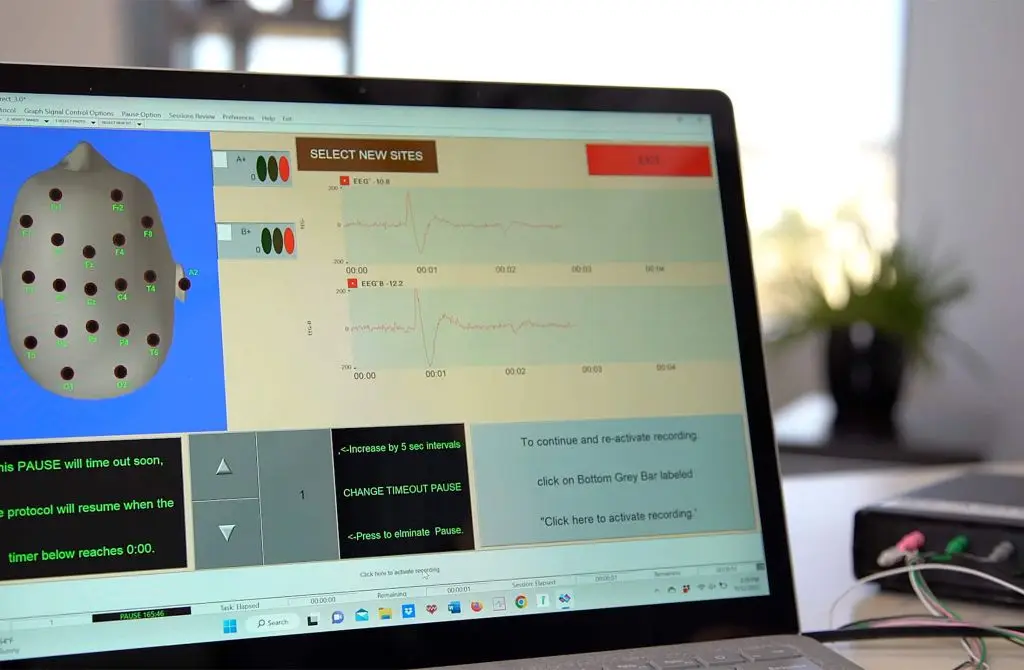Neurofeedback has evolved into a powerful tool for therapists and clinicians aiming to improve brain function, enhance mental health, and address a range of neurological conditions. With the market for neurofeedback therapy devices expanding, choosing the right one for your practice in 2024 requires understanding the latest advancements in technology, how neurofeedback works, and which features offer the most value.
In this guide, we’ll explore the critical factors to consider when choosing a neurofeedback therapy device, comparing traditional operant conditioning systems with the more advanced direct neurofeedback devices. We’ll also highlight the key benefits of CLARITY Direct Neurofeedback™, a leading solution designed for easy integration into clinical practice, with a rapid return on investment (ROI).
Operant Conditioning vs. Direct Neurofeedback: What’s the Difference?
When exploring the best neurofeedback device options, you’ll come across two primary types of neurofeedback systems: those that use operant conditioning and direct neurofeedback systems that apply a micro signal to the brain. Understanding the distinction between these methods is essential for making an informed decision.
Operant Conditioning-Based Neurofeedback
Operant conditioning is a traditional approach to neurofeedback. It involves monitoring the brain’s electrical activity through EEG sensors and providing the client with real-time feedback—often visual or auditory cues—based on their brainwave patterns. The goal is for the client to learn how to regulate their brain activity over time by engaging with these stimuli.
Drawbacks of Operant Conditioning Neurofeedback
- Active Engagement Required: Clients need to actively participate by responding to the visual or auditory cues presented during the session. This demands focus and can be taxing for individuals with attention issues or cognitive fatigue.
- Slower Results: Since operant conditioning relies on the client’s brain learning over time, results can be slower, often requiring several sessions before significant progress is noted.
- Training Complexity Practitioners must spend considerable time analyzing and adjusting the feedback parameters to suit each individual’s brainwave patterns. This can make sessions time-consuming and highly dependent on the skill of the clinician.
Direct Neurofeedback: A Game-Changer
Direct neurofeedback, like CLARITY Direct Neurofeedback™, represents a more advanced approach. Instead of relying on operant conditioning, these systems send a micro signal to the brain to stimulate self-regulation. This microsignal is so subtle that the client typically doesn’t feel it, yet it helps “reset” brainwave patterns, leading to noticeable improvements after just a few sessions.
The key advantage of direct neurofeedback is that the client remains passive and relaxed throughout the session. There’s no need for them to engage with feedback cues actively, making it a much more comfortable experience, particularly for individuals who struggle with focus, anxiety, or fatigue. Direct neurofeedback provides customized feedback to the brain through the micro signal, enabling faster and more efficient results without placing cognitive demands on the client.
Why Direct Neurofeedback is the Future in 2024
In 2024, the focus has shifted toward the advanced technology of direct neurofeedback devices. These systems offer a quicker, more comfortable experience for clients, making them highly effective for a broad range of conditions. Additionally, the faster ROI for practitioners is a key reason why many are moving away from operant conditioning systems and embracing direct neurofeedback.
Key Features to Look for in a Neurofeedback Therapy Device
Now that we’ve covered the difference between operant conditioning and direct neurofeedback, let’s dive into the critical features you should evaluate when choosing a neurofeedback therapy device for your practice.
1. EEG Sensors and Accuracy
A neurofeedback system’s accuracy hinges on its ability to measure brain activity through EEG (electroencephalography) sensors. Whether you’re considering traditional EEG neurofeedback devices or direct neurofeedback systems, it’s essential to ensure that the sensors are precise, easy to use, and capable of detecting even subtle brainwave fluctuations. High-quality EEG sensors reduce the likelihood of artifacts (errors) and ensure more reliable outcomes during sessions.
2. Software and User Experience
The software that accompanies a neurofeedback device is just as crucial as the hardware. Look for software that provides a seamless user experience, offering intuitive controls, automated processes, and customizable settings to meet the needs of diverse clients. The best neurofeedback device software will allow clinicians to tailor sessions easily without requiring extensive manual intervention.
For direct neurofeedback systems like CLARITYDirect Neurofeedback™, the software integrates all these capabilities into a turn-key solution. It’s designed for quick and easy setup, allowing therapists to start offering sessions to clients quickly. The software’s streamlined nature also means you spend less time troubleshooting and more time focusing on your clients’ needs.
3. Feedback Modalities
Feedback modalities differ significantly between traditional and direct neurofeedback systems. In operant conditioning neurofeedback, clients receive visual or auditory feedback based on their brainwave activity, which requires their active participation. On the other hand, direct neurofeedback devices provide a completely passive experience, where the brain responds to a microsignal without the need for the client to consciously engage with feedback.
When evaluating neurofeedback devices for sale, consider how feedback is delivered and whether the method aligns with the needs of your clientele. For instance, individuals with anxiety, ADHD, or PTSD often find the passive nature of direct neurofeedback less overwhelming and more conducive to relaxation.
4. Cost and ROI
Neurofeedback device costs can vary significantly, depending on the system’s complexity and features. When evaluating the neurofeedback machine cost, you should also consider how quickly you’ll see a return on your investment. For example, direct neurofeedback devices like CLARITY Direct Neurofeedback offer a quicker path to ROI due to their ease of integration into a practice, lower learning curve, and faster results for clients.
With CLARITY Direct Neurofeedback™, practitioners can typically expect to begin seeing financial returns within a few months of purchasing the device. The online training provided is extensive enough to give clinicians the confidence they need to deliver effective sessions but concise enough to ensure they aren’t stuck in a lengthy learning process that delays the start of treatment.
5. Training and Support
Another critical factor to consider when choosing professional neurofeedback equipment is the level of training and support offered. Many devices come with complex setups that require extensive training, and some providers may not offer ongoing support after purchase, leaving clinicians to navigate challenges on their own.
One of the standout features of CLARITY Direct Neurofeedback™ is the ongoing, live support from real clinicians. This allows practitioners to ask questions, troubleshoot issues, and continue improving their technique long after the initial training. Such support is invaluable, particularly for therapists new to neurofeedback, ensuring a smooth transition into offering the therapy as part of their practice.
6. Seamless Integration Into Your Practice
Finally, consider how easily a neurofeedback system can be integrated into your existing practice. Systems that require extensive setup or specialized knowledge can delay your ability to offer sessions and hinder your ability to scale quickly.
CLARITY Direct Neurofeedback™ is designed for turn-key integration, making it easy to start offering neurofeedback therapy without overhauling your current workflows. The setup process is straightforward, and the training is designed to help you get up and running as quickly as possible, meaning you can start generating revenue and helping clients within a matter of months.
The Future of Neurofeedback Therapy Devices: Trends & Innovations
As neurofeedback technology continues to advance, direct neurofeedback devices are emerging as the preferred choice for clinicians looking to offer cutting-edge brainwave therapy. These systems provide faster, more effective results for clients, while offering a simpler, more profitable model for practitioners.
When choosing a neurofeedback therapy device in 2024, focus on systems that offer the latest in direct neurofeedback technology, high-quality EEG sensors, intuitive software, and strong support. For those seeking a solution that combines all these features with seamless integration and fast ROI, CLARITY Direct Neurofeedback™ can be a top choice. With ongoing support from real clinicians, fast training, and easy setup, it’s a device that not only meets but exceeds the needs of modern neurofeedback practices.





